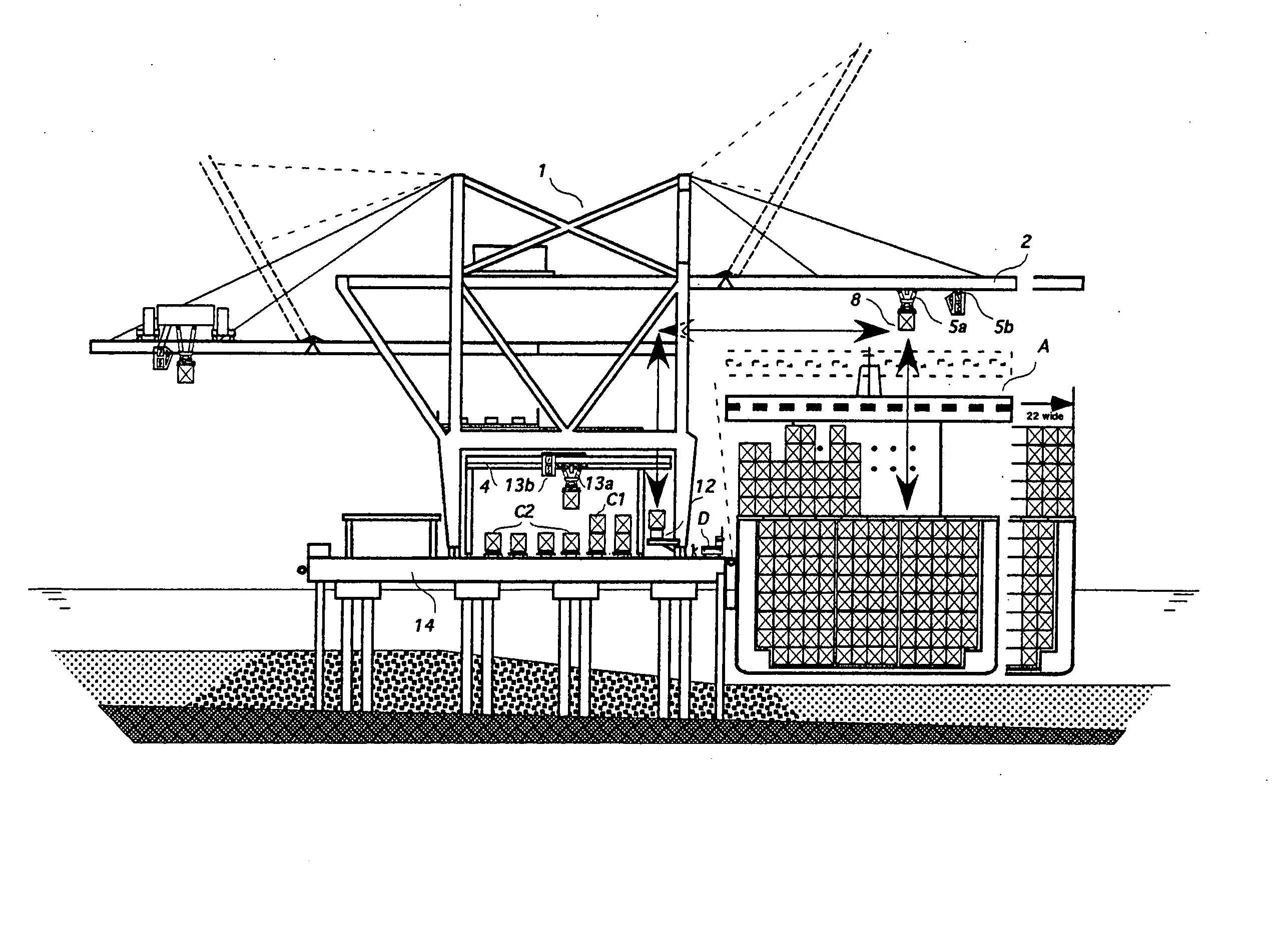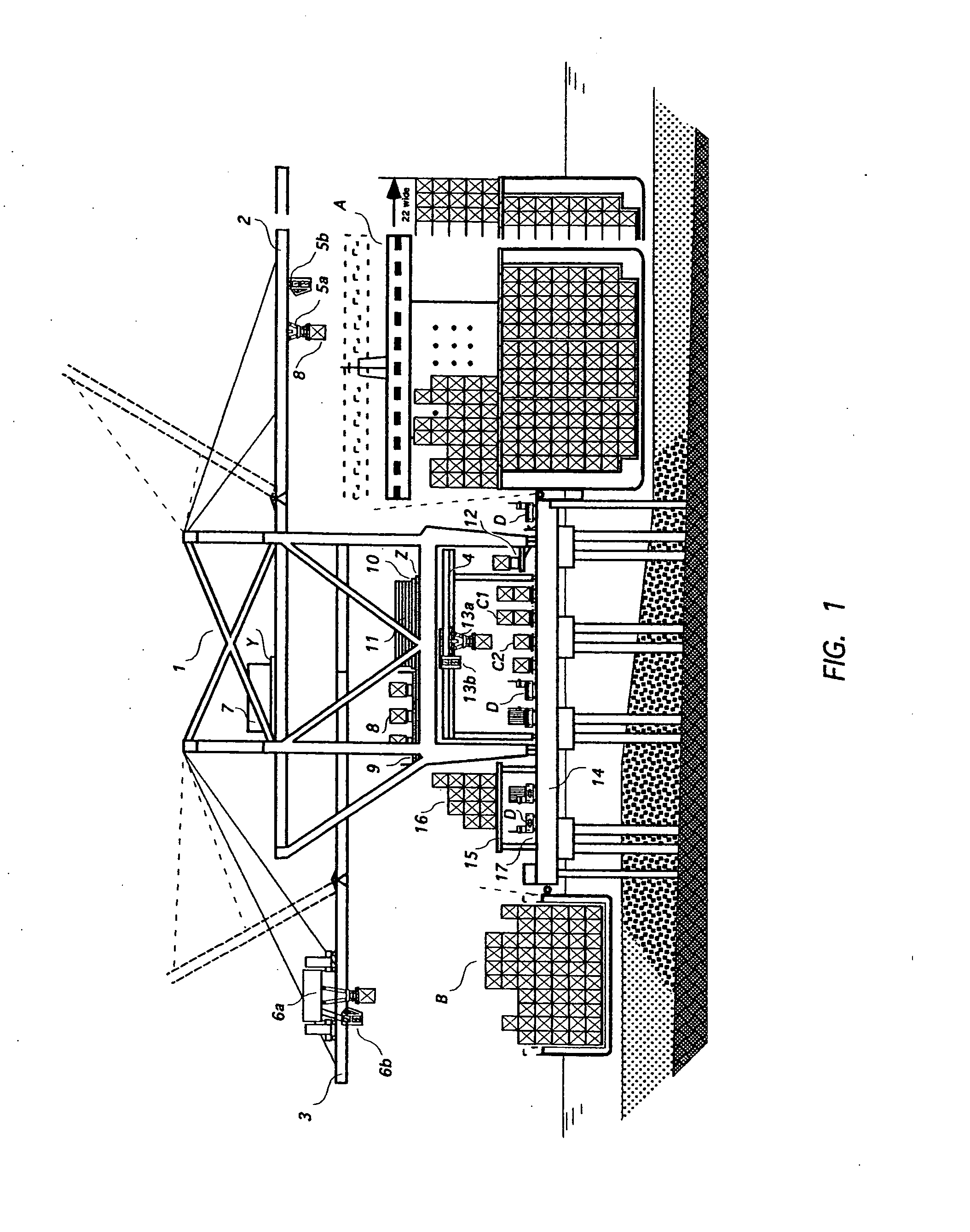Container crane apparatus and method for container security screening during direct transshipment between transportation modes
a container crane and security screening technology, applied in special-purpose vessels, hoisting equipment, instruments, etc., can solve the problems of increasing stack area, increasing the number of stacks, so as to achieve no loss in the overall container cycling time of a db crane, and the distance traveled by containers within such cranes is actually shortened. , the effect of speeding up the cycle tim
- Summary
- Abstract
- Description
- Claims
- Application Information
AI Technical Summary
Benefits of technology
Problems solved by technology
Method used
Image
Examples
Embodiment Construction
[0084]The present invention relates to crane apparatus and methods for effecting the direct transshipment of containers between transportation modes without the need for placing the containers on the ground. The crane apparatus comprises one or more sets of parent and sibling cranes, which are movable independently of one another, in synchronization, to directly transship containers between transportation modes. For ease of description, the embodiments of the invention described hereinafter show only one set of parent and sibling cranes, it being understood that in practice there will be two, three, four or more sets of parent and sibling cranes operating at the same time, depending on the size and type of container vessel being loaded / unloaded. Throughout the drawings, the same or like elements are denoted by the same reference characters.
[0085]One embodiment of the invention is illustrated in FIG. 1, which shows crane apparatus comprising a parent quayside container crane 1 togeth...
PUM
| Property | Measurement | Unit |
|---|---|---|
| time | aaaaa | aaaaa |
| time | aaaaa | aaaaa |
| time | aaaaa | aaaaa |
Abstract
Description
Claims
Application Information
 Login to View More
Login to View More - R&D
- Intellectual Property
- Life Sciences
- Materials
- Tech Scout
- Unparalleled Data Quality
- Higher Quality Content
- 60% Fewer Hallucinations
Browse by: Latest US Patents, China's latest patents, Technical Efficacy Thesaurus, Application Domain, Technology Topic, Popular Technical Reports.
© 2025 PatSnap. All rights reserved.Legal|Privacy policy|Modern Slavery Act Transparency Statement|Sitemap|About US| Contact US: help@patsnap.com



